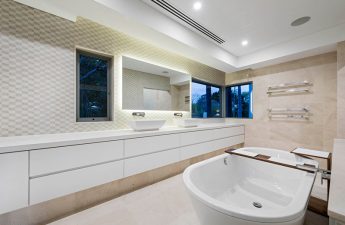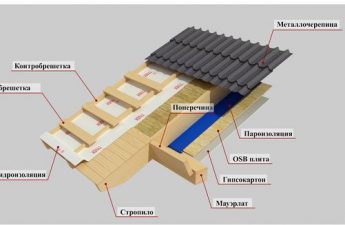What is a block house?Why is this construction option considered one of the most popular now? What are the advantages and disadvantages of it? Today we will answer these questions and put everything on the shelves. When building houses, today they are increasingly beginning to use not the usual bricks or, but more modern materials that are designed to reduce the cost of the process and increase the speed of construction. The most popular alternative to the "classics" has already become aerated concrete in the form of large even blocks. This is both expanded clay concrete and polystyrene concrete, but only two types are more common and in demand - aerated concrete and foam concrete. And how good they are for construction, we will try to figure it out. New materials are the result of progress and scientific advances. Their creation implies improving the qualities of existing things and minimizing previous shortcomings. Therefore, we will consider what advantages cellular concrete and block construction in general will give us:
1. Ecological compatibility
Among the components of both foam concrete andAerated concrete has no toxic or harmful elements, and all of them are of organic origin. Therefore, such materials are completely safe to use and will not affect the health of people living in such a house. 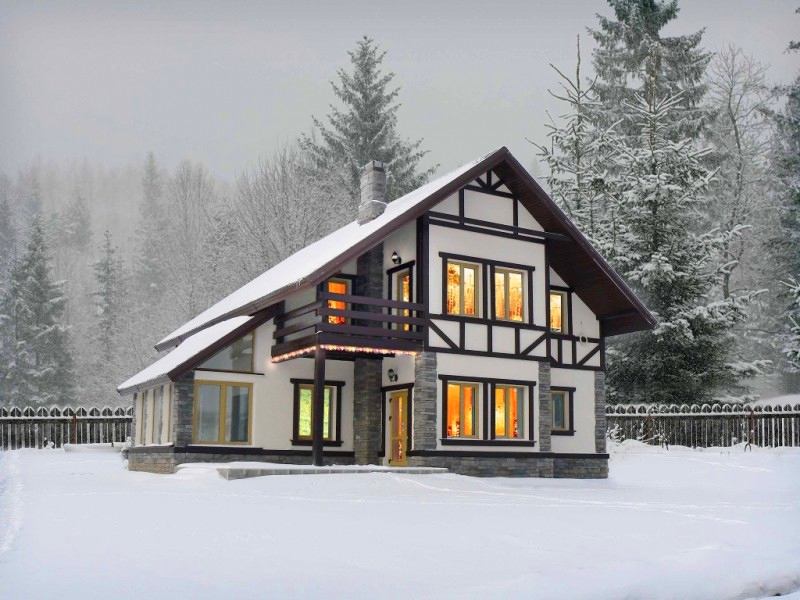
2. Ease of installation
The large size and evenness of the blocks allowachieve a high build speed. In addition, due to the smooth surfaces of cellular materials, the consumption of the glue mixture will be minimal, which, in turn, will also save a lot of money. Artyom Avakimov, General Director of EuroStroyGroup: - The terms of work on the construction of the foundation are approximately 1.5-2 months, the boxes of the house - 2 months without monolithic floors and 3 months - with monolithic floors, the roof - 1.5-2 months (in depending on the complexity and type of roof). As for the facade work, they are carried out together with the laying of the house box (if it is a facing brick) and after its construction (facade plastering). If we talk about the beginning of construction, then ideally this is the foundation flooded in the fall and the beginning of work on the construction of the house in the spring. This will make it possible, before the cold weather, to complete the work on the construction of the house box and the installation of the roof with insulation, and also not to worry that the soft roof, for example, will have to be laid with the onset of subzero temperatures. esg-moscow.ru 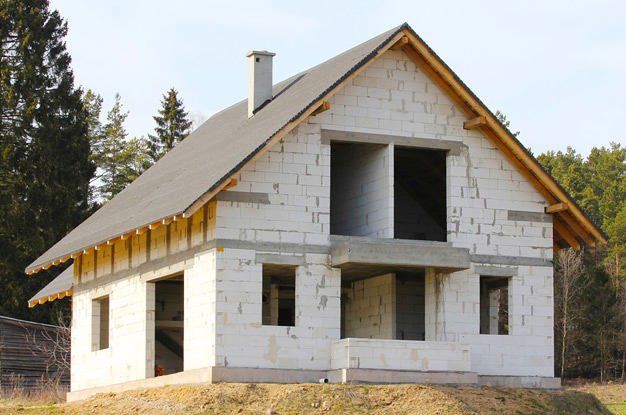
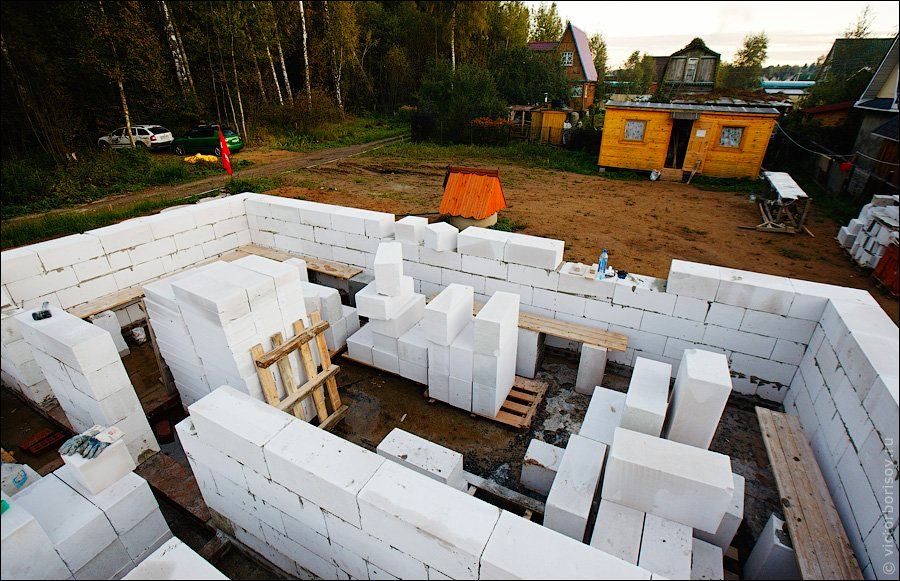
3. Heat and sound insulation
Thanks not only to the external, but also to the internalcellular structure, reminiscent of a honeycomb in a bee hive, foam concrete and its analogs have excellent heat-saving properties. So, even a wall of 40 centimeters will completely protect from winter cold and perfectly keep the warmth of the hearth, plus it will not be susceptible to mold, mildew and other unpleasant formations. Another advantage is the excellent soundproofing properties of foam concrete, which is again achieved due to the cellular structure. Be that as it may, using such materials, you will not then bother your neighbors with loud sounds, however, as they do to you. 
4. Durability
Especially it would be desirable to note, that blocks from cellularConcrete is practically not affected by time. They do not rot, they are similar in strength to stone, and after a while their thermal insulation and strength properties only improve. By the way, the fire safety at the blocks is also at a decent level, such a wall is capable of withstanding the unilateral effect of fire for about 4-7 hours. 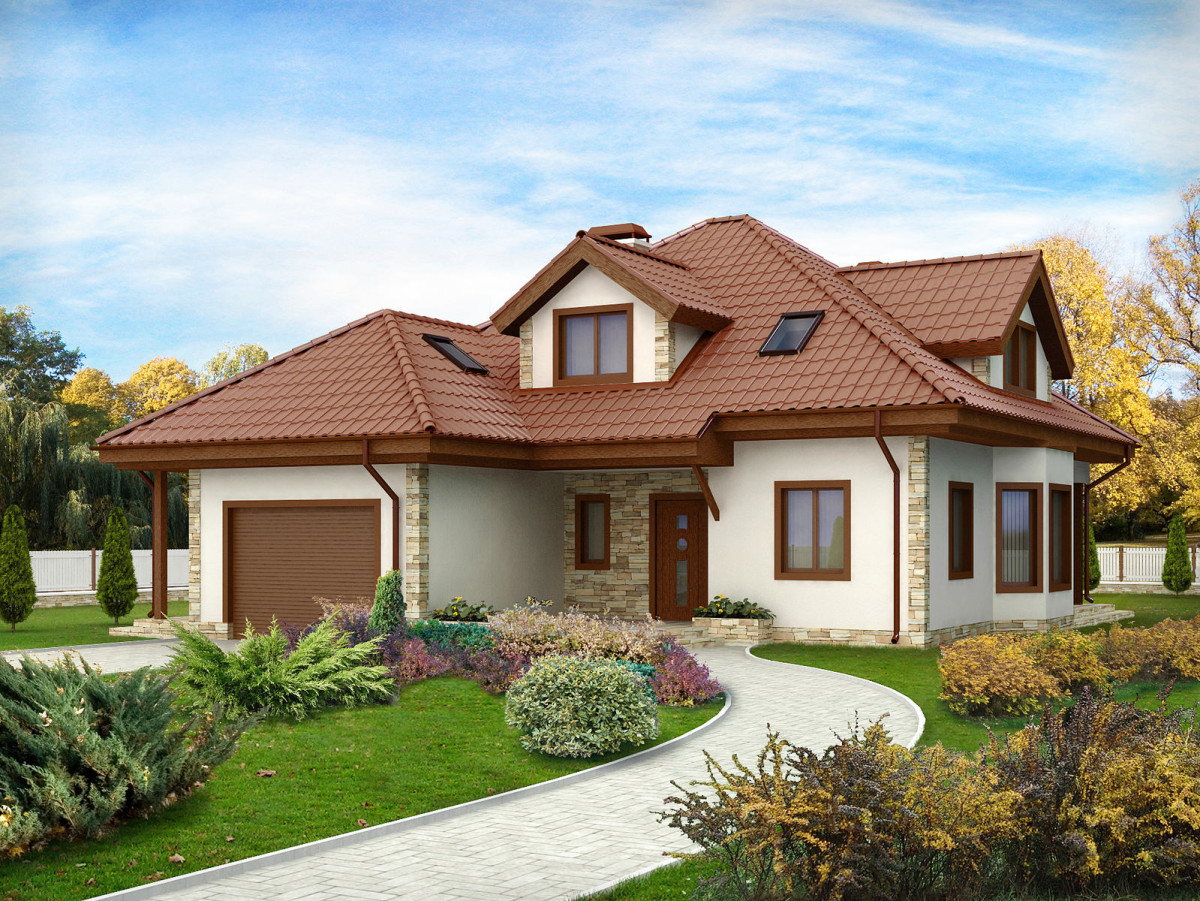
5. Availability
The cheapness of block houses also captivates, especially incompared with brick counterparts. But a wooden beam will also cost more than a building made of the same aerated concrete. Therefore, those who are looking for a high-quality basis for the construction of their home, but are limited in budget or simply want to save money, need to take this option for consideration. Artem Avakimov, General Director of EuroStroyGroup: - In order to calculate the cost of building a house from a foam block, the easiest way is to contact a company with a finished project, then you will receive an accurate estimate. Based on layouts (clients often confuse this with a project), only an approximate calculation can be made. Based on our experience, the cost per square meter of a foam block house varies between 19-24 thousand rubles, depending on the type of foundation, roof and facade, the number of floors and their type. esg-moscow.ru  But like everything else in our world, blocks of cellular concreteAlso have their shortcomings. And information about these shortcomings will save you from troubles and problems, allowing them to be avoided in a timely manner. Among the cons are:
But like everything else in our world, blocks of cellular concreteAlso have their shortcomings. And information about these shortcomings will save you from troubles and problems, allowing them to be avoided in a timely manner. Among the cons are:
1. Hygroscopicity
The same cellular structure brings not onlyPositive moments, but also such a negative factor as the accumulation of moisture, and this is one of the two main drawbacks. And absorb the moisture blocks instantly, and give it much longer. This is especially dangerous in winter, because moisture can freeze, and this, in turn, will promote the formation of cracks in the structure. Therefore, the construction of such structures are attempted to be carried out in warm and not rainy periods of time, in order to avoid unnecessary problems, down to material damage. 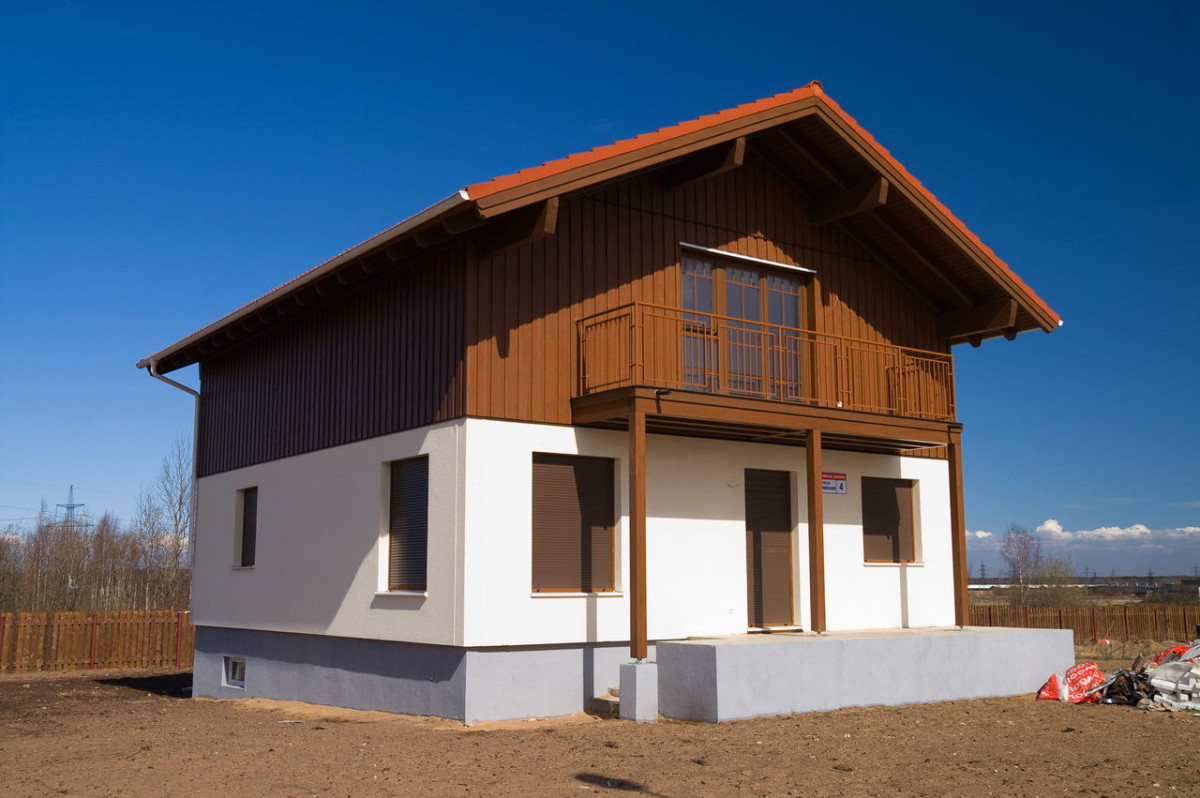
2. Friability
This is the second main minus of the blocks, but it is also notCritical and has its own solutions. Even with a small load, it is likely that a wall of foam blocks can crack and disrupt the stability of the entire building. First of all, the problem of brittleness is eliminated by means of special types of foundation that do not give precipitation, and are also resistant to seismic activity. Most often, this is the foundation of a monolithic slab or a bundle of reinforced concrete slabs. 
3. The need for exterior finishing
Such a shortcoming is directly related toHygroscopicity of the blocks, and in order to fix this state of things and need additional external finish. It can be plastering and coating with water-resistant paint, siding or facing with decorative bricks. But in any case, in a bare kind of leave the walls of cellular concrete can not. 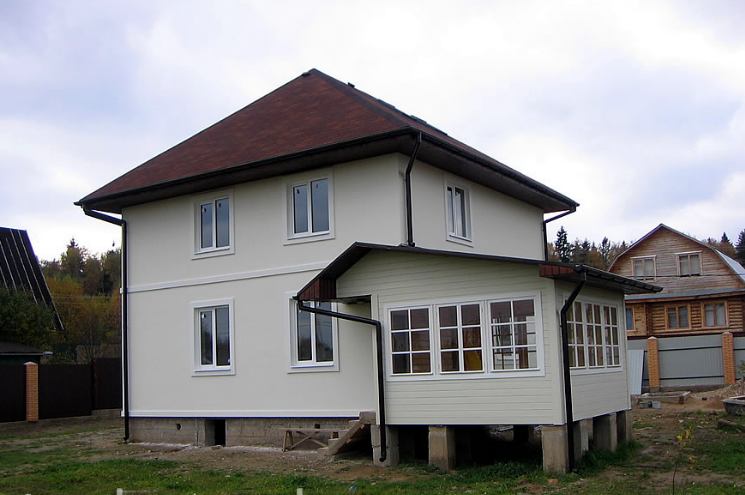
4. Interior finishing
However, the finishing touches not onlyThe outer side of the walls, but also their inner part. So, without fail it is necessary to additionally process walls with waterproofing solutions or mixtures, as well as conduct rough work without excessive zeal, acting accurately and accurately. In this case, in no case can not proceed to interior decoration, if the walls of aerated concrete will contain moisture. In this case, they should be thoroughly dried, often with the help of heating. 
5. Heat storage of walls
At the foam blocks this indicator is veryLow, so they are not recommended for use as internal partitions. Due to their low density and honeycomb structure, they are not able to give up the accumulated heat for a long time, which means they will quickly cool down, which will affect the microclimate in the house and increase heating costs. Although if you use blocks of increased density, this defect is partially smoothed out. 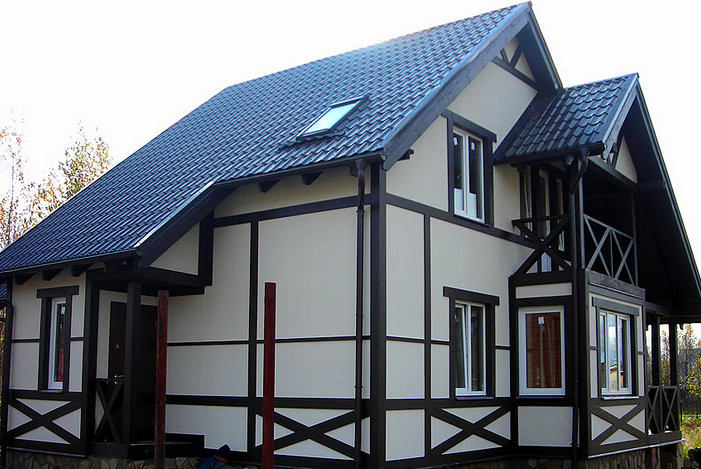 Evgeny Kovalchuk, head of constructionof the company "VRSK": - The advantages of aerated concrete blocks for our layman outweigh the existing shortcomings, therefore today it is one of the most popular and promising materials for the construction of houses. I would like to note the speed of construction of buildings from foam blocks, which are very similar in properties to stone, but at the same time have a light weight, improved heat-saving ability and ease of processing. For example, in small volumes, aerated concrete can even be cut with an ordinary hand saw. Disadvantages are not a problem if the planned work is carried out on time and the construction technology is followed, as well as the storage of materials. A slab or strip foundation will maintain the stability of the house and prevent cracks along the walls. The issue of hygroscopicity is also easily solved by external finishing with sand-cement plaster, brick cladding, siding and other methods. remrep.ru, bcecamu.ru, arsenal-lab.ru, waltzhouse.ru
Evgeny Kovalchuk, head of constructionof the company "VRSK": - The advantages of aerated concrete blocks for our layman outweigh the existing shortcomings, therefore today it is one of the most popular and promising materials for the construction of houses. I would like to note the speed of construction of buildings from foam blocks, which are very similar in properties to stone, but at the same time have a light weight, improved heat-saving ability and ease of processing. For example, in small volumes, aerated concrete can even be cut with an ordinary hand saw. Disadvantages are not a problem if the planned work is carried out on time and the construction technology is followed, as well as the storage of materials. A slab or strip foundation will maintain the stability of the house and prevent cracks along the walls. The issue of hygroscopicity is also easily solved by external finishing with sand-cement plaster, brick cladding, siding and other methods. remrep.ru, bcecamu.ru, arsenal-lab.ru, waltzhouse.ru
